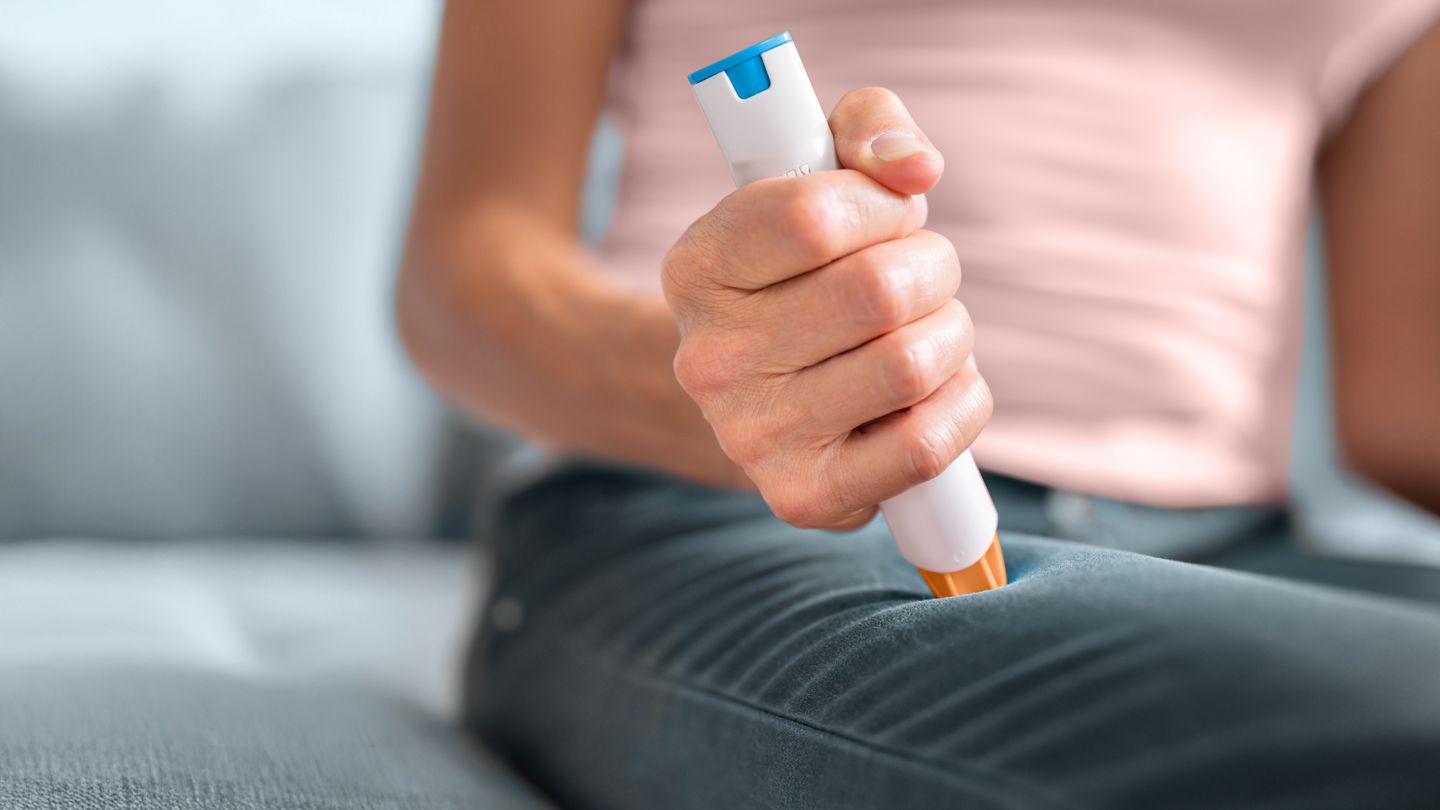Knowing what to do ahead of time can help you stay calm and act fast in an emergency.
The steps below apply to several common auto-injectors, including EpiPen, Auvi-Q, and impax (Adrenaclick). Always follow the instructions for the specific device you have. Most brands offer free practice devices or online video tutorials to help you prepare.
Step 1: Know When to Use Epinephrine
Use epinephrine at the first signs of anaphylaxis, especially if symptoms affect more than one part of your body. Symptoms may include:
- Breathing trouble or wheezing
- Dizziness or confusion
- Hives or swelling
- Nausea or vomiting
- Rapid heartbeat or low blood pressure
Don’t second-guess your decision to use it. “If you’re thinking about using it, go ahead and use it,” says Reisacher, noting that even if the reaction turns out not to be anaphylaxis, epinephrine is generally safe. “The worst thing that’s going to happen is you’ll feel like you’ve had a few cups of coffee.”
Delays — even brief ones — can lead to serious outcomes, including a higher risk of more severe symptoms, needing multiple doses of epinephrine, or extended hospitalization.
Step 2: Inject the Epinephrine
Each EAI has slightly different instructions, but here are the general steps for using it on yourself:
- Remove the auto-injector from its container. You may need to flip open the cap or pull it out of a case.
- Hold it firmly in your fist with the needle end pointing down.
- Press it into your outer thigh (even through clothing).
- Push firmly until it clicks.
- Hold it in place (usually 2–10 seconds, depending on the device’s instructions).
- Rub the area for 10 seconds to help with absorption.
“One of the biggest misconceptions that I’ve seen about [auto-injectors] particularly is that it involves a lot of strength,” says Reisacher. “You just need some pressure until you hear the click.”
If you’re using an epinephrine auto-injector on someone else, you may feel nervous. But staying calm can make a big difference. Speak gently and let them know what you’re doing:
- If they feel faint, help them lie flat with their legs raised.
- If breathing is difficult, roll them onto their side.
- Hold their thigh steady, press the injector into the middle of the outer thigh until you hear a click, and count — usually 2 to 10 seconds, depending on the device’s instructions.
Step 3: Note the Time and Call 911
Remember the time of the injection, so you can tell the medical team. If you’re helping someone else, reassure them that help is on the way and you’re staying by their side.
Even if symptoms improve, you (or the person you’re assisting) still need medical attention. Epinephrine works quickly, but it wears off in 15 to 20 minutes. “It’s broken apart very quickly in the liver, so it buys you a short amount of time to get to an emergency room after you’ve delivered epinephrine,” says Reisacher.
If symptoms return and you have a second auto-injector, use it 15 minutes after the first.
Read the full article here




